Last week we set up several core screens and strength tests. In this article, I have broken down the screens and tests into two major sections based on individual performance and developed corresponding training programs.
BACKGROUND:What Your Core Really Is and What it Does
Each section of the training program has a “beginner” and “advanced” option so you can pick an appropriate challenge. First you will learn reactive stabilization, then endurance, strength, and finally power.
Prerequisites
Reactive core stability and basic bodyweight endurance should be achieved before heavy exterior loading is programmed into your workout. You should be able to differentiate stabilizing your core and preventing movement from occurring and also selectively deciding when you want your core to flex and extend.
The knees to chest and toes to bar strength tests show control of core strength during abdominal flexion through a full range of motion. The deadlift strength test shows the ability to maintain spinal stability and resist spinal flexion, while expressing a significant level of strength through the posterior chain.
The Core Strength Program
This generalized training program is designed to assist in passing the screens and strength tests and bring you to an acceptable level of core stability and strength. In order to be successful, you must adapt the program in alignment with your current training schedule, ability level, and accommodate for any injuries with which you are dealing.
If you have pain, consult with an appropriate professional to resolve this before attempting this program. As Gray Cook says, “Pain changes the way we move. It is highly unpredictable and highly individualized.”
Begin the program based on your results from the screens and tests. If in doubt, begin conservatively and advance from there. Ensure you receive proper rest, with at least 1 day up to a maximum of 3 days in-between workouts. Below the workouts you will find a pictorial explanation of the exercises.
Screens and Strength Tests
- Trunk Stability Pushup – Perform a pushup keeping a stable spine demonstrating reactive core stability. See previous article for specific guidelines.
- Core Strength Tests – Perform a plank for 90 seconds and a side plank for 60 seconds with strict form.
- Knees to Chest/Toes to Bar – Complete 5 strict knees to chest for a passing score and 5 toes to bar for an optimal score.
- Deadlift – Complete a single deadlift meeting the Novice weight listed in the strength table. For optimal results complete a single deadlift meeting or exceeding the intermediate level weight.
Trunk Stability Pushup – Plank – Side Plank
Day 1
| Exercise (Beginner/Advanced) | Sets x Reps | Comment |
|---|---|---|
| Elevated / Core Assisted Pushups | 6×6 | Work to lowest height or least resistance possible with focus on proper form |
| Plank / Knee Plank | 6×15 seconds | Assume the prone plank position, sqeeze your quads, then glutes, then abs to help achieve a neutral spine. If you are struggling or unsure of form get a spotter or use a mirror to check |
| Side Plank / Side Knee Plank | 3×15 seconds each side | For a knee plank bend your legs at yours knees and maintain a straight line from knee to hip to shoulder |
Day 2
| Exercise (Beginner/Advanced) | Sets x Reps | Comment |
|---|---|---|
| Elevated / Core Assisted Pushup | 8×4 | Focus on good form, maintain low reps to ensure quality and get volume through more sets |
| Plank / Knee Plank | 4×30 seconds | |
| Side Plank Bends | 4×5 each side | Assume a plank position, then slowly drop your hips to the ground and pull back into proper alignment |
Day 3
| Exercise (Beginner/Advanced) | Sets x Reps | Comment |
|---|---|---|
| Elevated / Core Assisted Pushup | 10×2 | Use the lowest possible height or least resistance while maintaining form |
| Plank / Knee Plank | 3×45 seconds | |
| Side Plank | 4×30 seconds |
Day 4
| Exercise (Beginner/Advanced) | Sets x Reps | Comment |
|---|---|---|
| Hand and Foot Walk (aka Bear Walk) | 5×20 yards | Maintain core stability and a neutral spine like in a pushup or plank, walk contralaterally |
| Plank | 3 minutes | Take breaks as neccesary but for no longer than 20 seconds with timer only runing while holding the plank |
Day 5
| Exercise (Beginner/Advanced) | Sets x Reps | Comment |
|---|---|---|
| Med Ball Chest Pass | 5×6 | Throw at 70-80% of your max power. Concentrating on form and using your core will yield better results and max effort throws are not reccomended unless you have specifically trained to do so |
| Leg Raise | 4×8 | Start lying on the ground, you may use hands placed under glutes to help brace lower back. Once you begin each set do not set the feet down in-between reps |
| Front / Side Plank Combo | 6 minutes | Hold a plank for as long as possible, you may switch from from to side planks at any point in time. If you are unable to hold a varation perform 5 burpees and then resume your plank |
Repeat the first five days of workouts, with increasing the difficulty of the exercises, until you can achieve a successful screen and pass both the plank and side plank tests. Only then should you pass on to the next sections.
Knees to Chest – Toes to Bar – Deadlift
Day 6
| Exercise | Sets x Reps | Comment |
|---|---|---|
| Deadlift | 3×10 | Use a weight that you can complete for all the repetetions, maintaining good form, but still somewhat challenging |
| Bar Hangs / Pullup with Knee Raise | 4×15 seconds / 4×6 | Concentrate on maintaing active shoulders |
| Knee Raise / Knees to Chest | 3×8 | Use a dip bar if available to perform knee raises, keep shoulders pulled back and down like the active hang position, if dip bar not available use a roman chair, rings (if appropriate), tall plyo boxes, etc. |
Day 7
| Exercise (Beginner/Advanced) | Sets x Reps | Comment |
|---|---|---|
| Deadlift | 4×8 | Progress weight 10% from previous workout |
| Bar Hangs / Pullup with Knee Raise | 4×20 seconds / 5×6 | Keep active shoulders |
| Knee Raise / Knees to Chest | 4×8 | Use controlled form and don’t use momentum to complete the reps |
Day 8
| Exercise (Beginner/Advanced) | Sets x Reps | Comment |
|---|---|---|
| Deadlift | 5×6 | Progress weight 5-10% from previous workout – never sacrafice form for weight |
| Bar Hangs / Pullup with Knee Raise | 4×30 seconds / 4×8 | Active shoulders! |
| Knee Raise / Knees to Chest | 4×10 reps | |
| Lying knee to chest | 3×10 reps | Start from flat and drive knees up towards chest allowing pelvis to clear off the floor, control the movement returning to straight legs, don’t touch floor between reps with feet |
Day 9
| Exercise (Beginner/Advanced) | Sets x Reps | Comment |
|---|---|---|
| Deadlift | 6×4 | Progress weight 5-10% |
| Hanging knee raise / L Pullups | 5×5 | Focus on form and control the downwards portion of the exercsie to reduce any swinging |
| Leg Raise / Leg Raise Extension | 3×10 | Perform a leg raise as displayed below |
Day 10
| Exercise (Beginner/Advanced) | Sets x Reps | Comment |
|---|---|---|
| Deadlift | 7×3 | Progress weight 5-10% |
| Hanging Knee Raise / L Pullups | 4×8 | Strict form don’t kip on the L Pullups |
| Leg Raise / Leg Raise Extension | 4×10 |
Redo the strength tests to check your performance. If you have successfully cleared all of the screens and strength tests, then resume your specific training schedule. If you passed through the beginner section, then take 3-5 rest days and repeat the schedule.
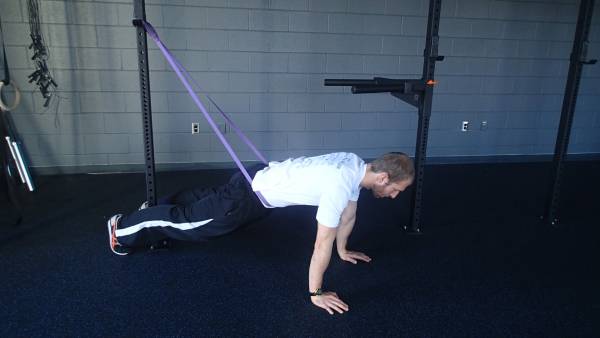
Left photo: Band assisted pushup – bottom. Right photo: Band assisted pushup – top.
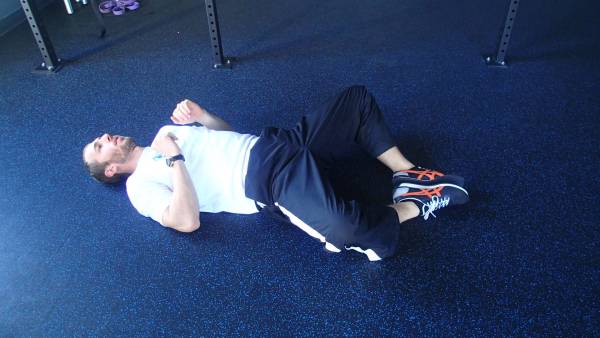
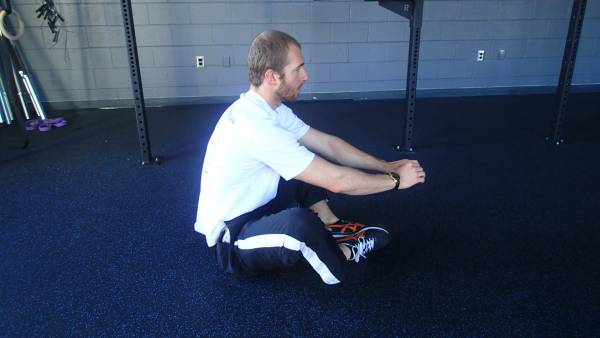
Left photo: Butterfly situp – bottom. Right photo: Butterfly situp – top.
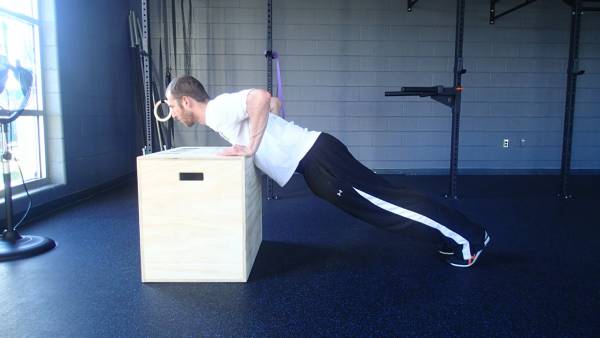
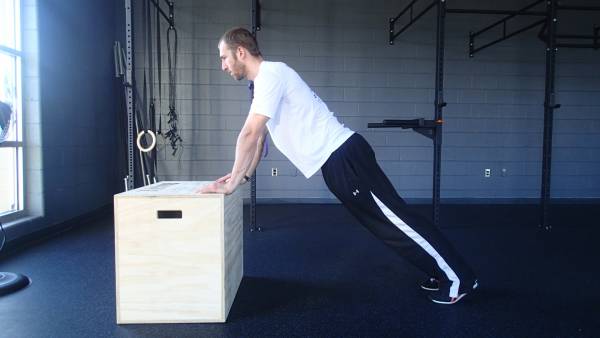
Left photo: Elevated pushup – bottom. Right photo: Elevated pushup – top.
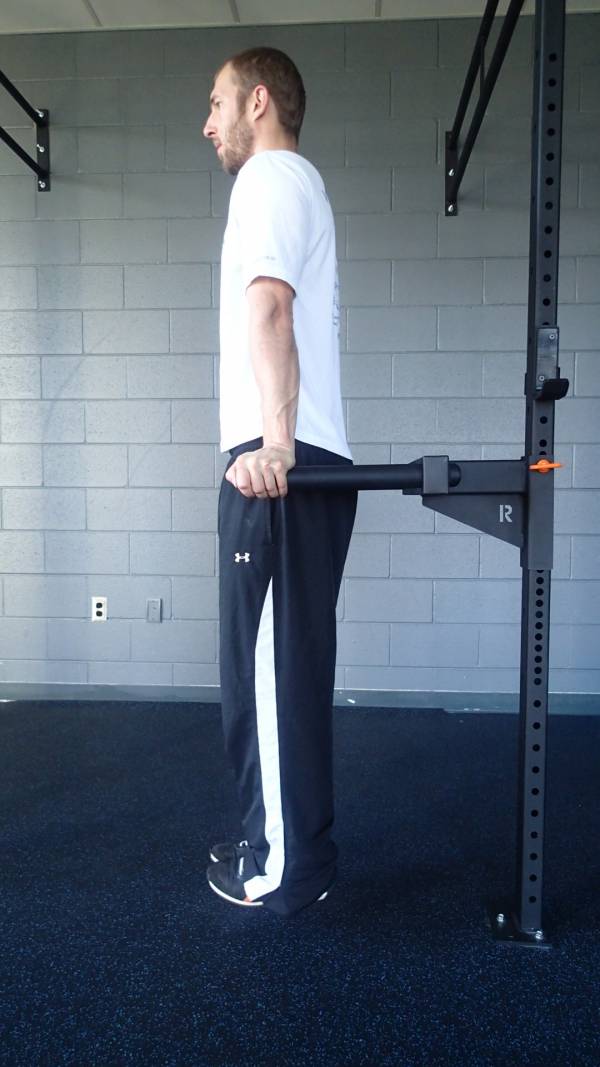
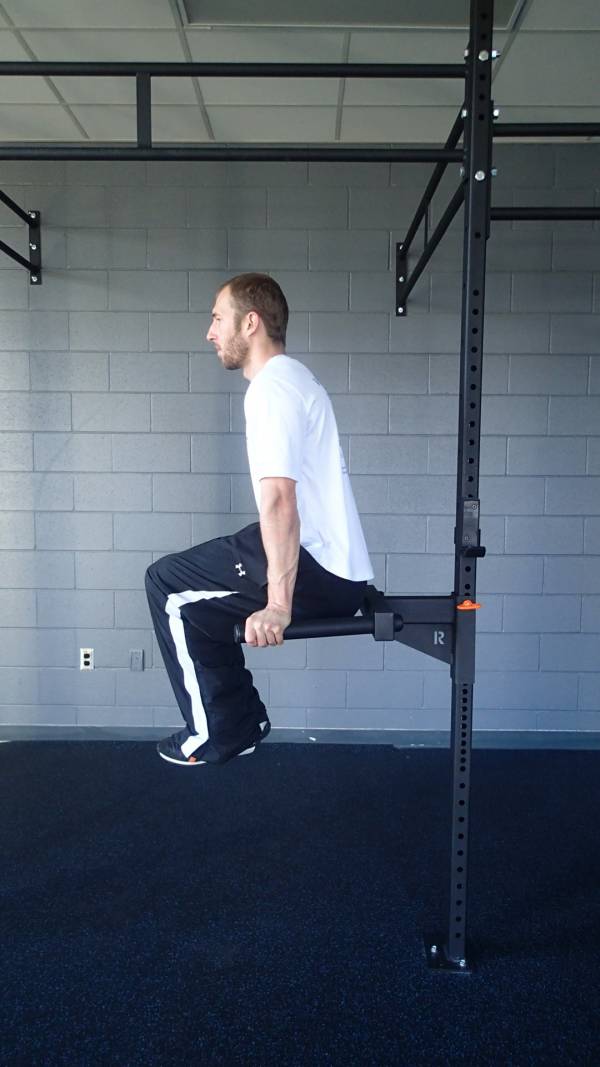
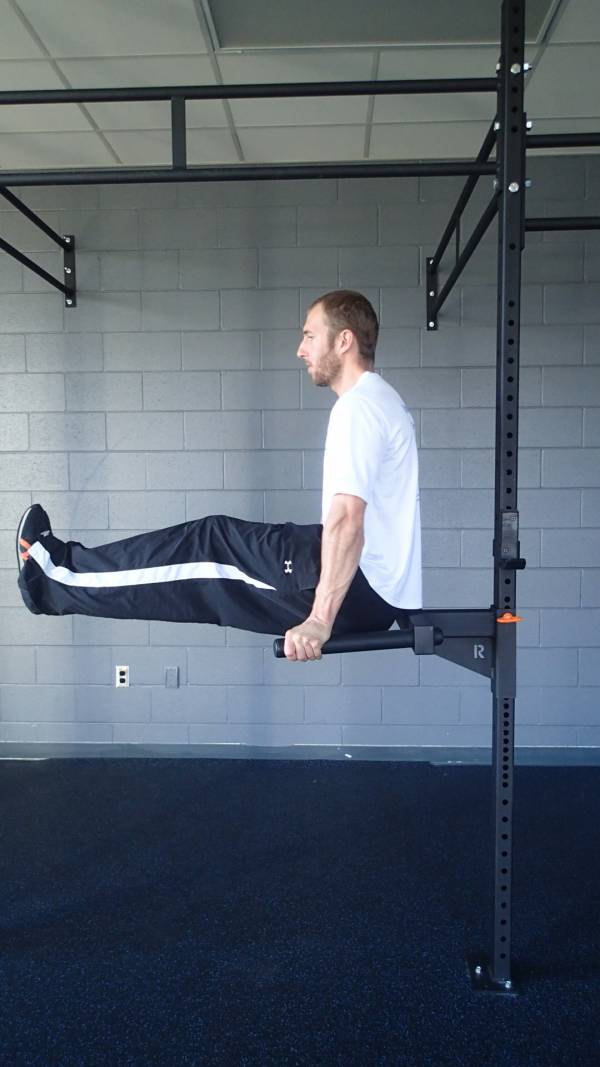
Left photo: Straight leg raise start position. Center photo: Knee raise – top. Right photo: Straight leg raise – top.
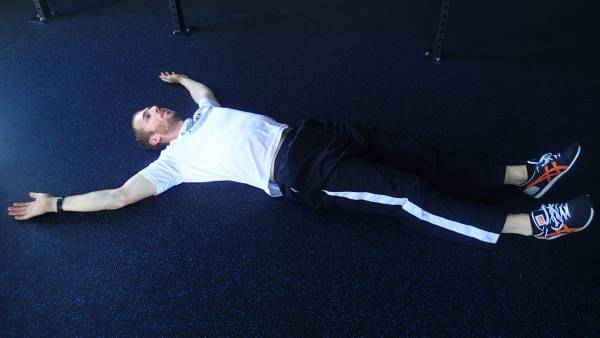
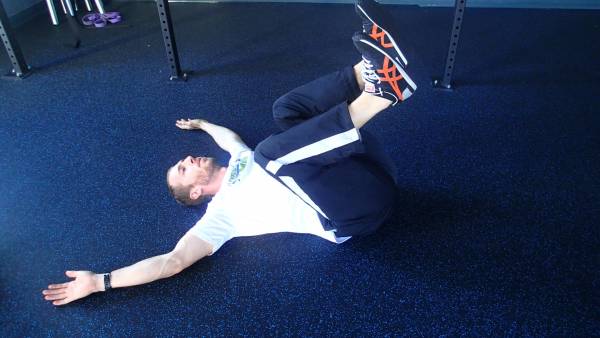
Left photo: Lying knees to chest start position. Right photo: Lying knees to chest – top.
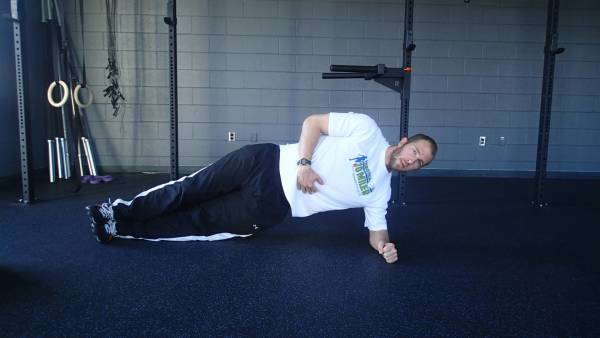
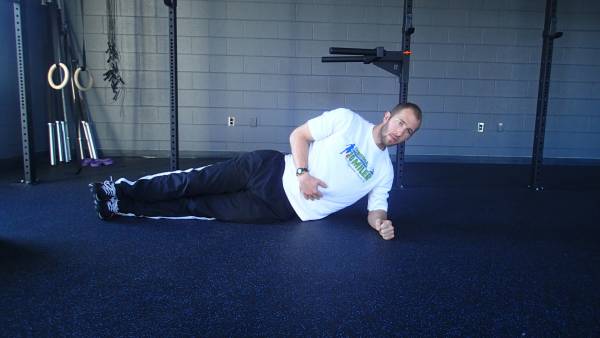
Left photo: Side plank – top. Right photo: Side plank bend.
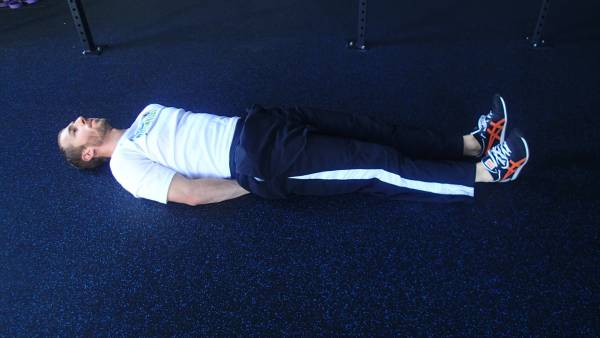
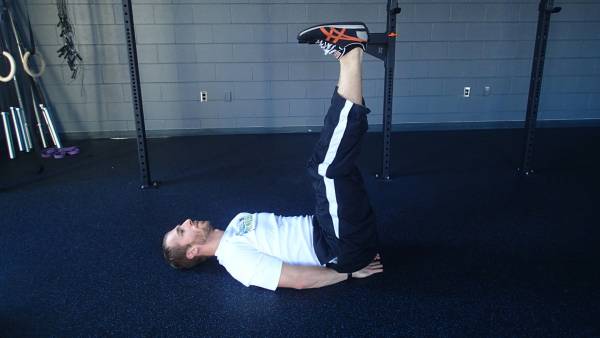
Left photo: Supported leg raise start position. Right photo: Supported leg raise – top.
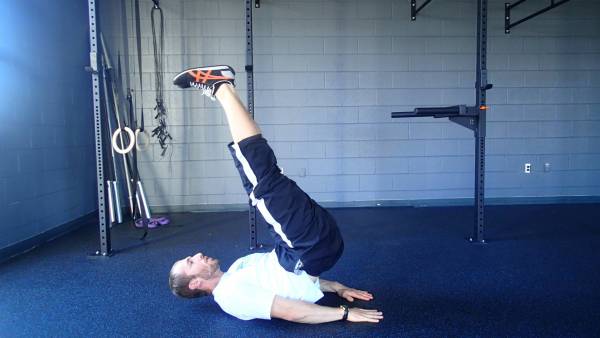
Supported leg raise extension.
FURTHER READING: Dozens of Articles on the Core and Core Work
References:
1. Gray Cook, Dr. Lee Burton, Dr. Kyle Kiesel, Dr. Greg Rose, and Milo Bryant, Movement: Functional Movement Systems: Screening, Assessments, and Corrective Strategies, 2010 (Santa Cruz, California: On Target Publications).
2. “ASSESSMENT OF CORE STABILITY: DEVELOPING PRACTICAL MODELS” Andy Waldhelm May, 2011
3. “Functional Movement Screening” accessed February 18th 2013
4. “Deadlift Strength Standards” accessed February 18th 2013






